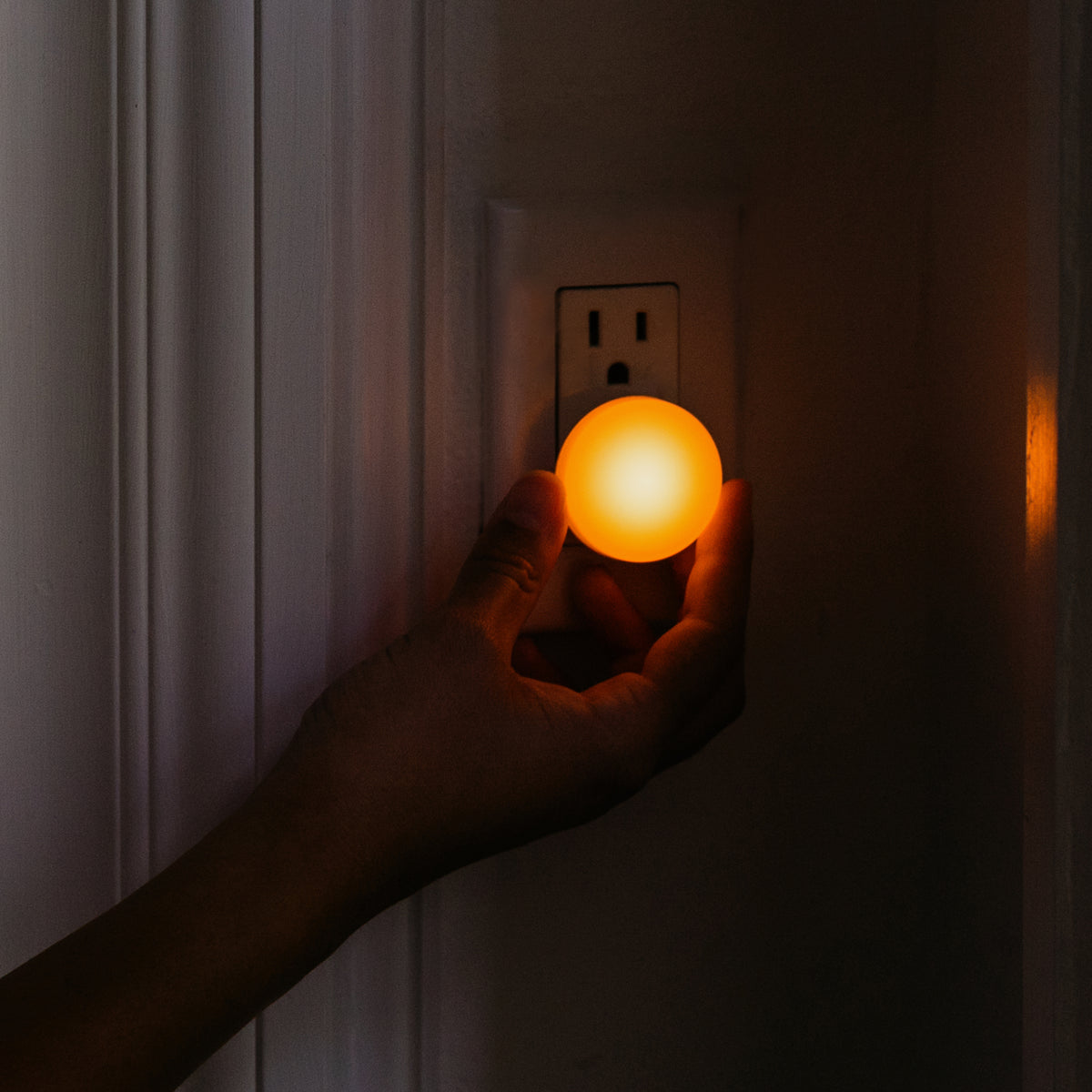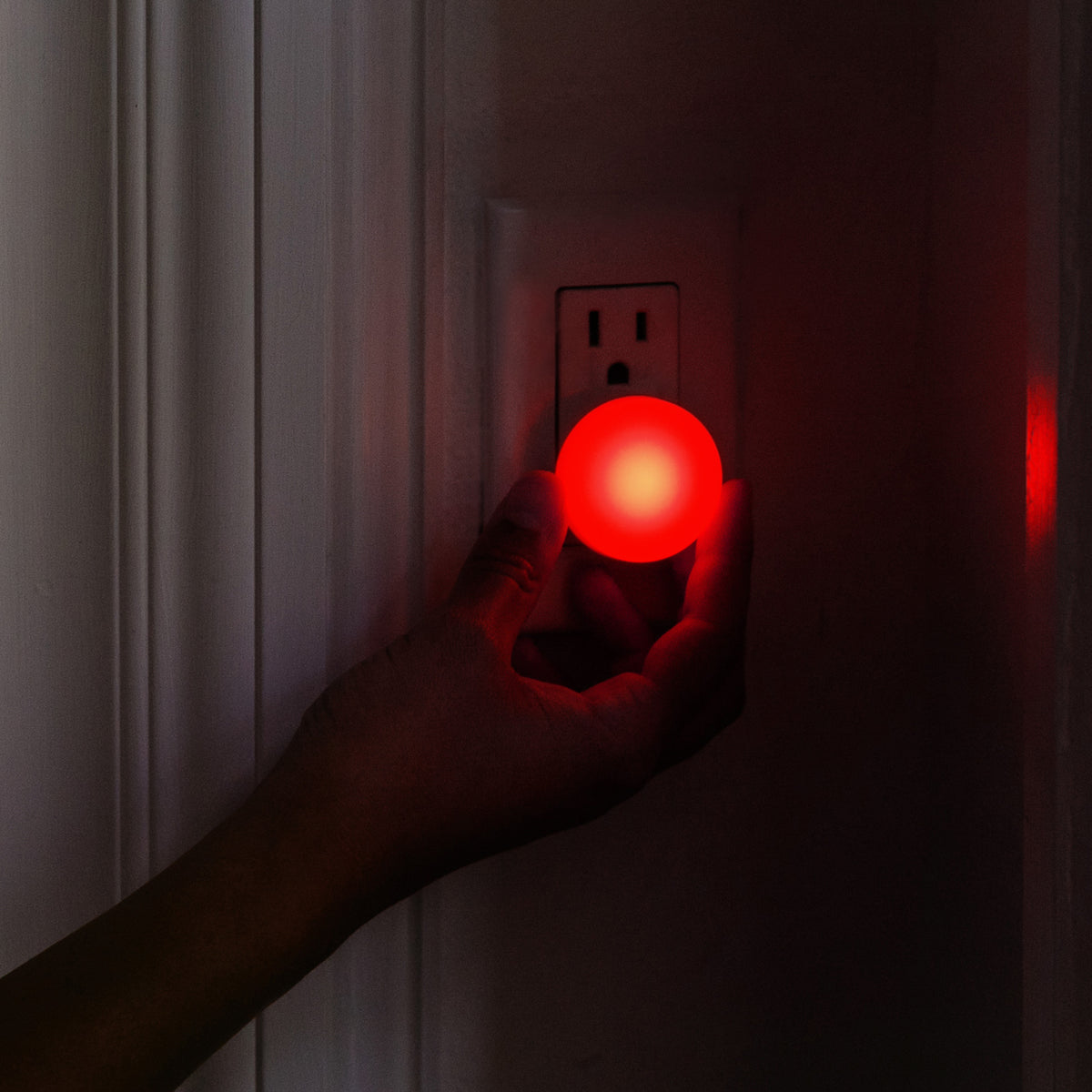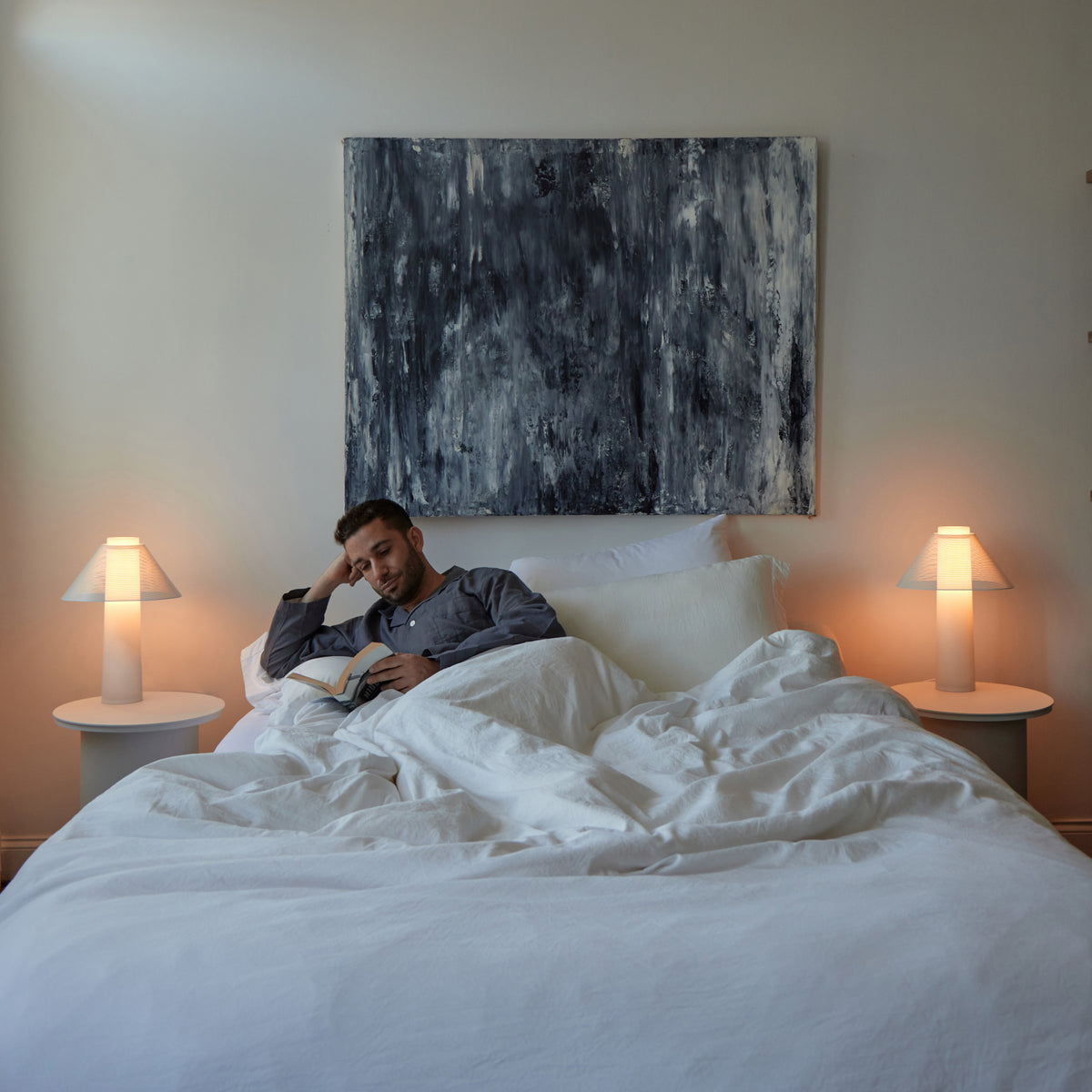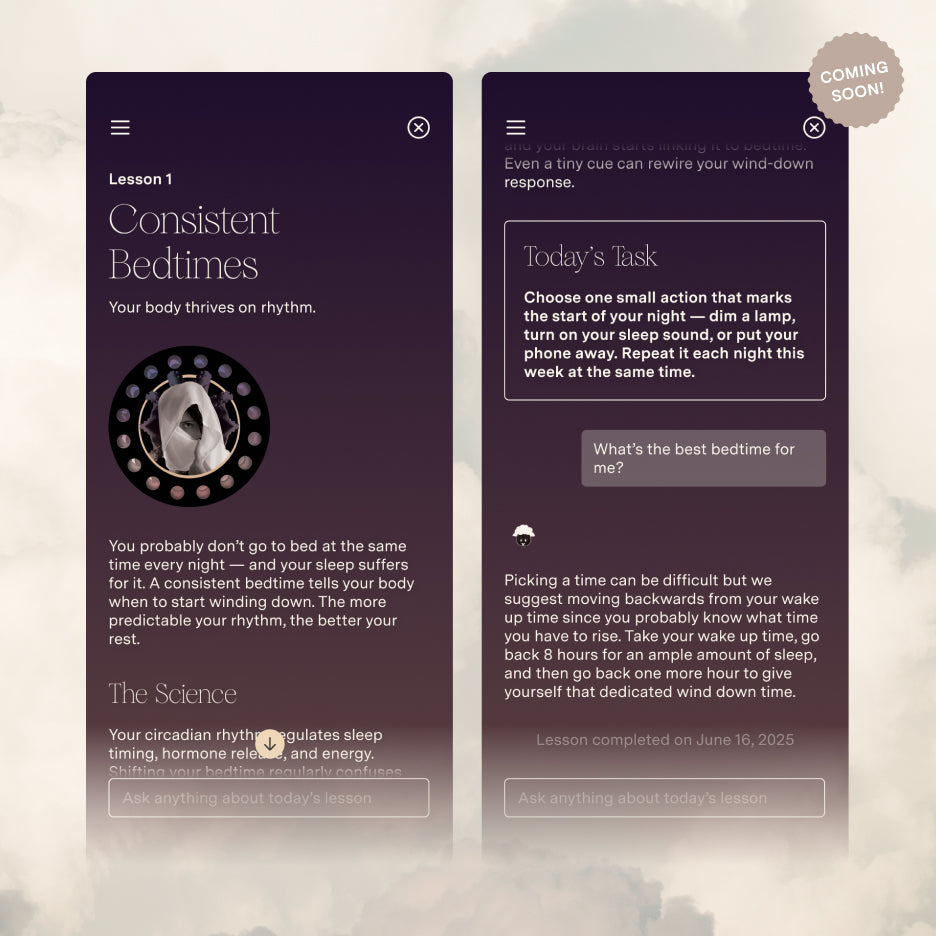The bedroom is meant to be a sanctuary where we wind down from our busy lives, recharge our minds and bodies to embrace a new day. But for the 70% of U.S. adults who share their sleeping space with a partner, we often find ourselves playing tug of war with more than the bed sheets. Battles ensue from the lights on/lights off dilemma, blanket thieves, night owls and early risers, and Screen Time vs. We Time. Sleep is essential to our physical, mental, and emotional health. When we are deprived of it, we get tangled up in resentment and our relationships suffer.
While we can’t change our chronotype – a gene we all have that influences our production of melatonin and when we’re prone to doze off and wake up – we can still have sweet dreams without banishing ourselves (or our partner) to the living room couch. If you’re wondering how to sleep better with a partner, we’ve got five suggestions on how to create a balanced sleep environment where both people are heard and their sleeping needs are met.
Don’t sleep well next to your boyfriend? Girlfriend waking you up in the night? Read on to find some fixes…
1. The Scandinavian Sleep Hack
Hygge and minimalist-yet-inviting furniture design aren’t the only contributions Scandinavians have to offer when it comes to a happy home. Their beyond simple solution to all those blanket robbers out there is…drum roll…two separate blankets. Yep, we wish we had already figured this one out too. This also resolves disagreements around how warm your bedding should be. If your partner insists on having the window open in the dead of winter, at least your blanket will keep you toasty.
2. Create a Calm Environment
A bedroom should feel like a calm oasis away from the rest of your home. A clean, comfortable, and organized space allows you to quiet your mind and leave the day behind. Keep your bedtime essentials in your personal nightstand so that everything you need is within arm’s reach and you’re not rustling through drawers (and disrupting your partner) to find them. Invest in simple storage solutions and embrace a muted color scheme that feels tranquil and light.
3. Clear Communication and Compromise
We know about the importance of understanding different love languages in a relationship. But understanding different sleep languages is important, too. Be open to making compromises about having cell phones, tablets, and televisions in the bed or bedroom. Maybe one person is comfortable wearing earbuds or an eye mask, or you both decide to designate your sleep sanctuary a technology-free zone. Remember that clever little device called an alarm clock? Invest in one that promotes a peaceful rest, as well as opaque curtains or blinds, quality bedding, and a mattress you’re both madly in love with. Developing healthy couple sleeping habits can help your relationship even when you’re not asleep.
4. Separate Bedtimes
You wake up well before sunrise; your partner doesn’t fall asleep until after midnight. When night owls and early risers fall in love and share a bed, that difference can put a strain on a relationship. But it doesn’t have to. If you’re stressing about how to sleep with your partner comfortably, the answer may be elegantly simple: go to sleep when you’re tired. Theoretically, it’s a nice idea to crawl into bed together but not if one person ends up staring at the ceiling while the other is in the land of nod. One key for how to sleep with your partner comfortably is to respect each other’s schedules and body clocks. Don’t take it personally. Think of it as gifting your significant other with a solid eight hours of dream time.
5. Touch Base
After a long day, sex may not be on your agenda, but that doesn’t mean you should neglect touch altogether. Spooning or cuddling up for a quiet conversation are great ways to check in and decompress together at the end of the day because physical contact with your partner releases the so-called love hormone, oxytocin, which studies have found strengthens connection, boosts mood, and encourages empathy. This flood of hormones tends to give people a sense of peace and safety that can lead to higher-quality sleep.
Even if you have difficulty sleeping next to someone, you can still make the effort to meet each other’s needs. For example, If you need space to fall asleep, but they’re craving contact, maybe cuddle up for ten minutes a night so they feel comforted and supported, and then lovingly put a little air between you two when it’s time to drift off.
























